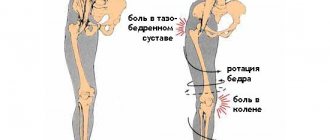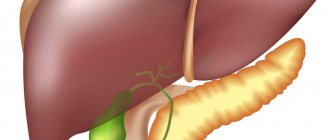Klinefelter syndrome is a genetic disease characterized by a disorder of the human genome. It occurs exclusively in boys and is associated with the presence in their karyotype of one or more additional X chromosomes (female sex chromosomes).
Image of a normal karyotype (set of chromosomes) of a healthy woman (a) and man (b). Normally, in a healthy person, it consists of 46 chromosomes. The differences between male and female karyotypes lie in the last pair. In women, chromosome 45-46 is XX, in men it is XY.
Normally, during the fertilization process, a child receives half of its genetic material from the father and half from the mother. The X chromosome is always transmitted from a woman, and either X or Y from a man (this determines the sex of the unborn child).
What he really is?
Klinefelter syndrome is a disomy or polysomy in which males have at least two X and one Y chromosome. The disease in the modern world occurs with a frequency of one case per thousand newborn boys. We will consider the causes of Klinefelter syndrome below. Among children who suffer from oligophrenia, the prevalence of this pathology is up to two percent. The syndrome was named after the American specialist Harry Klinefelter, who first described this disease in 1942. The karyotype of such patients with an additional X chromosome was determined back in 1959. Since the leading clinical manifestation of the disease is hypogonadism, such patients are treated by specialists from the field of endocrinology and andrology.
What are the causes of the syndrome?
Similar to the case of Down syndrome, Klinefelter syndrome is associated with chromosome nondisjunction during meiosis, or it may occur due to a violation of zygote division. Moreover, quite often, in sixty percent of cases, boys acquire an extra maternal X chromosome instead of the paternal one. Among the possible causes of this kind of chromosomal abnormality are also considered viral infections, along with late pregnancy, and inferiority of the regulatory mechanisms of the immune system of the father or mother.
In the presence of an extra X chromosome in Klinefelter syndrome, aplasia of the testicular epithelium may develop along with their subsequent hyalinization and atrophy, which in adulthood will be accompanied by azoospermia or endocrine infertility. Among the causes of male infertility, the disease accounts for about ten percent, which specialists in the field of reproductive medicine must constantly remember.
With the mosaic variant of the pathology, which makes up about ten percent, some of the cells have a normal karyotype, so men with this syndrome may have normally developed and, in addition, functioning glands of the genital organs, capable of maintaining reproductive abilities.
How does the karyotype of Klinefelter syndrome manifest itself?
How to recognize Klinefelter syndrome during pregnancy?
Prenatal testing is a simple and effective way to detect Klinefelter syndrome in the womb. Thanks to this, you can prepare early for raising a child who will have some problems. Early knowledge of the disease is also important from a clinical point of view, as it will allow the doctor to know about the causes of the disease and possible treatments.
Genetic prenatal tests are performed after 10 weeks of pregnancy. Then it is possible to obtain enough of the baby's DNA from the mother's blood to check its chromosomes. For this purpose, for example, tests are carried out:
- NIFTY Pro Test;
- Sanco test – test for the entire genome;
- Sanco Plus test;
- Harmony test.
DNA testing
These are non-invasive tests as they only require a venous blood sample from the mother. Applications include sex chromosome aneuploidy, trisomes (including Down and Edwards syndromes), and some deletion and duplication syndromes (eg, Cri de Cat syndrome).
Symptoms
A child born with this disease appears with normal weight and has correct differentiation of the external genitalia and normal testicular size. At an early age, a frequent incidence of otolaryngological diseases can be observed among boys with this syndrome. What are other signs of Klinefelter syndrome? Patients are more susceptible to bronchitis and pneumonia than others. Such children, as a rule, are lagging behind in motor development; for example, they may begin to hold their head up, stand, sit, or walk later than others. In addition, they have delayed speech development. Already at the age of eight, boys with this syndrome may be extremely tall along with a disproportionate physique, which will be expressed in the presence of long limbs and a high waist. In the pre-pubertal period, a person may develop bilateral cryptorchidism.
Symptoms such as mild mental retardation, difficulty making friends with peers, and behavioral problems are common among half of patients with Klinefelter syndrome.
External signs
External signs that indicate the presence of this syndrome in a child, as a rule, appear already in the prepubertal or pubertal period of development. These include the eunuchoid body type. These children later develop secondary sexual characteristics. In addition, they have testicular hypoplasia, a small penis and gynecomastia. In the postpubertal period, involution of the testicles is observed, which is accompanied by loss of fertility.
When examining adolescents suffering from chromosomal Klinefelter syndrome, they reveal the absence or, in extreme cases, scanty hair growth on the face, as well as in the armpit area. Pubic hair growth in such adolescents occurs according to the female pattern. Most patients are distinguished by rare emissions and erections, they retain sexual desire, however, due to severe androgen deficiency, most often by the age of thirty, libido decreases and impotence forms.
Features of patients suffering from the syndrome
Klinefelter syndrome (pictured) is often accompanied by skeletal abnormalities, resulting in chest deformities and osteoporosis. Such patients have a malocclusion, and also have congenital heart defects, and so on. Among other things, the predominance of a vagotonic reaction is typical, for example, bradycardia, acrocyanosis, sweating of the palms and feet. On the part of the visual organs, nystagmus is often noted along with astigmatism and ptosis of the eyelids.
Patients suffering from the syndrome are particularly predisposed to the development of concomitant pathologies, such as:
- Epilepsy.
- Mammary cancer.
- Cholelithiasis.
- Diabetes.
- Phlebeurysm.
- Hypertensive diseases along with obesity.
- Cardiac ischemia.
- Rheumatoid arthritis.
- Acute myeloid leukemia.
Such people may experience various mental illnesses in the form of manic psychosis and schizophrenia. There is evidence that confirms the tendency of patients with this syndrome to alcoholism, homosexuality and drug addiction.
Signs of Klinefelter syndrome in childhood
1. The child is tall, his waist is high, his legs are elongated.
2. Lagging behind his peers in development, both mental and psychological.
3. Sometimes there are emotional swings, sometimes sad, sometimes happy.
4. Children with the syndrome often have congenital defects in the heart and other vital organs; they are found out about them after the child undergoes a routine examination.
5. Birth defects are observed.
Intellectual and psychological characteristics of patients with the syndrome
The IQ of patients ranges from below to above average. There is a disproportion between verbal abilities and the general level of intelligence, so that it is difficult for them to perceive a large volume of material by ear, as well as to construct phrases with complex grammatical structures. This causes a lot of trouble in learning processes. This also affects professional activities. Experts consider patients to be modest, timid people with low self-esteem and too much sensitivity.
Diagnosis of the disease
Like other chromosomal abnormalities, Harry Klinefelter syndrome in the fetus can be detected during the mother's pregnancy during invasive prenatal diagnosis. To do this, amniocentesis, chorionic villus biopsy or cordocentesis is performed with further karyotype analysis.
Postnatal diagnosis of the syndrome is carried out by endocrinologists, andrologists and geneticists. As part of the study of sex chromatin, Bar bodies are found in the cells of the oral mucosa, which serves as a marker of the described deviation. Another characteristic sign is a special change in the skin pattern on the fingers. But still, the final diagnosis of the presence of chromosomal abnormalities can be established only after a karyotype study.
Ultrasound examination of the scrotum can reveal a decrease in the total volume of the testicles. Based on the study of the androgen profile, the amount of testosterone in the blood of a patient with Klinefelter syndrome is reduced, although an increase in the level of follicle-stimulating and luteinizing hormones is noted. When analyzing spermograms, oligo- or azoospermia is revealed. Morphological examination of materials obtained by testicular biopsy helps to identify hyalinosis of the seminiferous tubules along with hyperplasia and a decrease in the number of Sertoli cells, and, in addition, the absence of spermatogenesis.
During their lives, men suffering from this syndrome can seek help from andrologists, sexologists or endocrinologists with problems of infertility, impotence, and, in addition, gynecomastia or osteoporosis, however, it often happens that the disease remains unrecognized.
How to diagnose correctly
Diagnosis of Klinefelter syndrome
Klinefelter syndrome is diagnosed quite difficult and often late, when the patient consults a doctor due to infertility or sexual dysfunction. Even worse things can happen: the patient appears on the threshold of the outpatient clinic after 30 years, having already acquired a “bouquet” of concomitant diseases.
It is very important, even in the early stages of a boy’s development, to pay attention to the physiological characteristics and external signs of disturbances in the structure of the body, active growth, muscle tone, mental state, ability to perceive information, etc. Thus, an always slightly open mouth, wide-set narrow eyes, deformed ears, squint, flat and short nose, excess weight, mental retardation can be direct indicators of the presence of Klinefelter syndrome.
An alarming signal is also the child’s exposure to frequent colds, viral respiratory infections, influenza, and pneumonia. They should alert every responsible parent. It is necessary to signal at the slightest symptoms, going to further stages of diagnosis.
In addition, it is worth paying attention to the child’s behavioral reactions. The category of patients with Klinefelter syndrome is often lacking initiative, emotionally unstable (there is tearfulness, aggressiveness), and is easily suggestible. Such children are not capable of creative activity.
During puberty, the diagnosis of Klinefelter syndrome becomes easier, since “clues” from the disease begin to arrive, as already mentioned, through underdeveloped primary and secondary sexual characteristics.
In adulthood, you need to undergo the following research methods that will help make the correct diagnosis:
Recommended topic:
Lost desire to have sex
- Find out the level of follicle-stimulating hormone in the urine (high levels are recorded in men with Klinefelter syndrome, which is usually typical for women).
- Check testosterone levels (in such patients it is always very low or zero).
- Densitometry is indicated - checking bone density for the presence of osteoporosis.
- Measure blood pressure.
- Contact a geneticist for a karyotype test (patients with Klinefelter syndrome will always have at least one extra X chromosome).
- In the process of making a diagnosis, the patient is sent for an ultrasound of the heart and genitourinary area, where it is possible to identify atrophy of the seminiferous tubules and a decrease in the volume of the testicles, characteristic of patients with Klinefelter syndrome.
- A spermogram is performed (patients tend to have a decrease in the number or complete absence of sperm).
- A maternal blood sample is indicated for the presence of alpha-fetoprotein. This is the name of a protein produced by the fetal liver and released into the mother’s blood. Its too high or too low concentration signals a possible malformation of the fetus. If a defect is suspected, further molecular biological research methods can be used.
- Invasive prenatal diagnosis with further analysis of the fetal karyotype - amniocentesis is also possible. This type of early detection of the development of Klinefelter syndrome in a child during pregnancy is intended for parents from the “risk zone”. Amniotic fluid is collected at 15-16 weeks. At this stage, mutated chromosomes are clearly visible. If at least one of the parents has genetic pathologies, the method is very justified.
Klinefelter syndrome: treatment
Unfortunately, it is not possible to completely cure the syndrome today. Nevertheless, all patients require symptomatic and pathogenetic treatment. In childhood, such people require prevention of infectious diseases along with hardening, physical therapy, correction of speech disorders, and the like.
From adolescence, boys with this disease are prescribed lifelong sex hormone replacement therapy. As part of this, intramuscular injections are made using testosterone propionate. In addition, sublingual administration of methyltestosterone is required, and so on. Early and adequate hormone therapy will prevent testicular atrophy, promoting increased sexual desire, and, in addition, more or less normal development of secondary sexual characteristics. In case of pronounced enlargement of the mammary glands, such patients undergo surgery to correct gynecomastia.
In order to increase working capacity, and, in addition, social adaptation, as well as to prevent the psychopathization of the individual, along with its antisocial orientation, psychotherapy is prescribed.
Treatment
Therapy will not eliminate XXY syndrome and other forms of Klinefelter pathology.
Medicines and procedures only remove the symptoms of the disease, improve the general condition of a man and stimulate sexual development.
If a child is diagnosed with Klinefelter’s pathology before the age of 11-13 years, the treatment regimen is based on the following methods:
- Classes with a speech therapist are prescribed to boys before school to improve their speech.
- Therapeutic gymnastics strengthens muscles and bones, improves immunity, and stimulates physical development.
- Hardening increases the body's defenses. To make the boy endure infections more easily, he is prescribed drugs for immunity - Immunal, Grippferon .
Treatment of Klinefelter syndrome in adolescents and men is carried out with the following drugs:
- Testosterone patches are prescribed from 11-12 years of age to stimulate puberty. The hormone from such a product enters the blood slowly in small doses, therefore it has a mild effect on the body. Later, testosterone is used in tablets and injections.
- Nootropics (Piracetam) affect the mental development of the patient. These medications improve metabolic processes in the brain. The effect of the drugs will be greater if you start taking them from 10-12 years of age.
- Calcium supplements strengthen bones. Vitamin complexes are recommended for children: Calcemin, VitaMishki Calcium+ . Teenagers and adults are prescribed more serious drugs: Osteogenon, Rocaltrol .
Other treatments:
- The diet helps the patient avoid obesity and diabetes, strengthens bones and improves hormonal levels.
- In vitro fertilization helps men with chromosomal mosaicism to have children. For the procedure, material is taken from the testicle and connected to the woman’s reproductive cell. If the sperm of a sick man is not suitable for this, donor sperm is used.
Hormone therapy
The patient is prescribed testosterone drugs. Treatment is lifelong, starting at the age of 13–15 years. This therapy eliminates anemia and osteoporosis, enhances erection and libido, and stimulates the development of sexual characteristics. The teenager adapts better to society and suffers less from mental disorders. This therapy does not affect the ability to have children. Drugs for treatment:
- Testosterone cypionate is a short-acting drug: injections are given after 1-2 weeks.
- Testosterone capronate works for a month and is the best remedy for long-term replacement therapy.
- Methyltestosterone is prescribed in tablets. It increases hormone levels for 4-6 hours, has many side effects, so it is rarely used.
Mastectomy
If Klinefelter's disease has caused severe breast enlargement in a man, surgery is performed. The main indication for it is the risk of cancer. During the procedure, the doctor removes excess fat and glandular tissue. The operation is performed in a plastic surgery clinic under general anesthesia and lasts 1-1.5 hours. Progress of the procedure:
- The surgeon makes an incision along the areola line. Vacuum removes excess tissue or scrapes it out.
- If oncology has already appeared, an incision is made under the breast and the muscles in the affected area with the lymph nodes are removed.
- The surgeon places stitches that will dissolve on their own. If there is a large incision under the breast, the edges are tightened with staples: they are removed after 2 weeks.
- Tubes are placed in the chest to drain excess fluid. This speeds up tissue healing and reduces swelling.
In men, the operation is often performed using the subcutaneous method: the nipple and areola remain. The patient recovers quickly. Complications are rare. In patients, scars heal slowly and pain may occur. The patient remains in the hospital for 2 days.
For the first 4 weeks after surgery, follow these recommendations:
- Visit the clinic for dressing changes.
- Wear a compression bandage - the body will recover faster.
- Take antibiotics for the first week to eliminate the risk of inflammation.
- Do not go to the sauna and steam bath, do not play sports.
Psychotherapy
A man who, due to Klinefelter's disease, is different in appearance from others and has problems in the sexual sphere, feels inferior. If there are mental disabilities, this worsens the mental state further. The patient needs psychotherapy because he:
- becomes withdrawn;
- suffers from depression and mood swings;
- avoids people.
This treatment facilitates the patient’s adaptation to society and increases his performance. During the sessions, a person learns to accept himself, realizes the importance of treatment, and builds a line of behavior in society. Family psychotherapy – with parents and partners – also gives good results. This helps create a comfortable home environment. Features of treatment of patients of different ages:
- One of the parents is with the child during the session. The doctor communicates with both, but changes the behavior of the adult more. During treatment, game methods are used. Working in groups with peers who also have severe syndromes or developmental delays has a good effect.
- Adults often work one-on-one with a therapist. Group practice is needed to improve communication skills.
Prevention of the syndrome and prognosis
Patients suffering from Klinefelter syndrome have the same life expectancy as other people, although the presence of a tendency to develop chronic diseases may be a factor in early mortality. Most of these patients are infertile. The only probable option for having children in a family in which the partner is sick is the use of donor seminal fluid. But, nevertheless, in the presence of a mosaic form of Klinefelter syndrome, a man can still become a father on his own or use assisted reproductive technology, for example, in vitro fertilization.
To assess the likelihood of having a child with this syndrome during pregnancy monitoring, women are offered prenatal screening. True, even in cases of receiving positive information about the presence of such a syndrome in the fetus, the gynecologist’s insistence that the woman terminate the pregnancy is absolutely unacceptable. Thus, the decision on the advisability of continuing pregnancy should be made exclusively by future parents. If the parents have a normal karyotype, the risk of having a child with a similar chromosomal abnormality is no more than one percent. Clinical observation of patients suffering from Klinefelter syndrome is carried out by endocrinologists.
Cytogenetic explanation for the occurrence of the deviation
The human chromosome set has 46 chromosomes, that is, there are 23 pairs in total. 44 chromosomes are somatic, and the remaining 23rd pair is sexual. It is this that determines whether a person is female or male. A woman's karyotype contains two X chromosomes, while men have an X and a Y chromosome.
The genetic essence of the described syndrome is that instead of the normal genotype, the patient will have one or even two extra sex chromosomes “X”. The genotype of such a man will be incorrect. Such a change in the set of chromosomes leads to certain defects in appearance along with health problems and mental retardation. If we consider this aspect as inheritance, then thanks to the possibility of DNA analysis, it turns out that in most cases, which is about sixty-seven percent, Klinefelter syndrome in people can occur due to a violation of the division process during the formation of female reproductive cells.
More precise reasons for the formation of this disease have not yet been established. Most researchers deny the influence of heredity, since men with this disease are almost always infertile. However, scientists note the following risk factors that contribute to the development of this pathology:
- Too young or, conversely, mature age of the expectant mother.
- Pregnant women living in unfavorable environmental conditions.
- Marriage between blood relatives.
Main reasons
The main factor in the development of Klinefelter syndrome is a genetic mutation, which results in the appearance of extra female sex X chromosomes in the 23rd pair.
The genetic makeup of a healthy person normally contains 46 chromosomes (or 23 pairs). Chromosomes are made up of genes. Genes are functional units of heredity and variability. Of the 23 pairs, 22 are called somatic, and 23 are called sexual; it is the pair that consists of the X and Y chromosomes and determines the gender of an individual. Their combination determines whether a boy or a girl will be born:
Recommended topic:
Garlic for potency
GIRL: 22 somatic pairs + 23 pairs of chromosomes have the XX set
BOY: 22 somatic pairs + 23 pair looks different – XY
Any violation of this karyotype leads to the occurrence of a congenital genetic disease. For example, with Down syndrome, trisomy 21 is observed (an extra chromosome is inserted into the 21st pair), and with Patau syndrome, trisomy 13 is observed (an extra chromosome is inserted into the 13th pair).
In our case, with Klinefelter syndrome, the anomaly occurs due to the introduction of an additional X chromosome into the standard XY pair of a boy in the 23rd pair.
The following pathological variations in the picture of the disease are known:
- 47, XXY – disomy – there is one extra X chromosome – the most common form;
- 48, ХХХY – trisomy – in the standard set of XY there are already 2 extra X chromosomes;
- 49, ХХХХY – tetrasomy – three extra X chromosomes (more than 100 cases):
- 50, ХХХХХY – 4 extra X chromosomes (single cases);
- 48, XXYY – mosaic variant – one extra X- and Y-chromosome.
The more excess X chromosomes in the 23rd pair, the higher the likelihood of mental disorders. Cleft palate, cleft palate, heart defects, foot deformities, valgus curvature of the knee joints, narrow palpebral fissures, flat bridge of the nose - these are just a few clinical characteristics of such overloaded combinations in the disease.
The main causes of Klinefelter syndrome include:
- too young or elderly parents;
- marriages between relatives;
- alcoholism or drug addiction of parents;
- use of potent drugs;
- consumption of genetically modified products;
- viral diseases suffered during pregnancy;
- effect on the fetus of heavy metals and highly toxic substances (benzopyrene, dioxins);
- environmental degradation, stress;
- ionizing radiation.
Life of a person with the karyotype of Klinefelter syndrome
The prevalence of the described syndrome occupies a rather impressive position, namely third place among the general spectrum of possible endocrine diseases. Only diabetes mellitus and problems with the thyroid gland are ahead of this pathology.
The life expectancy of a man affected by such a gene mutation, as already noted, is often the same as that of a healthy person. But, unfortunately, a life path with the presence of such a deviation is in many cases accompanied by certain health problems that can lead to early death. Doctors name the following complications that can result from this disease:
- Insufficient mental development, which can reach the stage of debility.
- The development of mental disorders that lead to alcoholism, and, in addition, suicidal tendencies. An antisocial lifestyle may also be observed.
- Having a high risk of developing diabetes mellitus along with obesity.
- Worsening of congenital heart disease.
- Development of osteoporosis.
- There is a high probability of developing a malignant tumor, for example, breast carcinoma, which can be caused by gynecomastia.
One of the most important and difficult problems for those who suffer from the symptoms of Klinefelter syndrome is infertility. Loss of fertility is caused by the presence of pathology of the genital organs along with the absence of healthy and viable sperm in the seminal fluid.
Causes and forms of Klinefelter syndrome
The disease can be expressed in different ways, some have enlarged breasts, others experience mental disorders, due to which the child loses various abilities. Each person has their own individual symptoms; for some, the syndrome affects the brain, for others, it affects the functioning of the central nervous system. The disease is dangerous because it leads to infertility.
The following main reasons can be identified:
1. A gene mutation that causes female sex chromosomes to double.
2. Due to an unfavorable environmental situation.
3. If the child is from a related marriage.
4. Genetic predisposition.
5. Maternal age - most often the syndrome is observed in those children born to women after 30 years of age.











